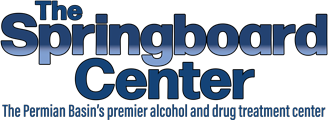Choosing the right medication can feel overwhelming, especially with options like Halcion and Valium on the table. Both are benzodiazepines, but they serve different purposes and come with unique effects.
Halcion, primarily used for short-term insomnia, acts quickly, but its effects can fade just as fast. Valium, on the other hand, is a versatile option for anxiety, muscle spasms, and more, with a longer duration of action.
Let’s break down Halcion vs Valium, how to use them effectively, and how to recognize if you or someone you love might be struggling to manage them.
Halcion vs. Valium: Understanding Benzodiazepines

When comparing Valium vs. Halcion, their duration of action is a key differentiator. This benzodiazepine comparison reveals important differences in safety profiles.
Benzodiazepines represent a class of medications that work by enhancing the effects of GABA, a natural brain chemical that promotes calmness and relaxation.
First developed in the 1950s, these medications revolutionized the treatment of anxiety, sleep disorders, and seizures. Think of GABA as your brain’s natural brake pedal – benzodiazepines help press that pedal more effectively.
Both Halcion (triazolam) and Valium (diazepam) belong to this family, but each has unique characteristics that make them suitable for different situations.
Their differences lie not just in their chemical structure, but in how quickly they take effect, how long they last, and what conditions they’re best suited to treat.
Addiction and Benzodiazepines
Choosing to take benzodiazepines like Halcion and Valium can be daunting, particularly for individuals already grappling with mental health challenges.
While these medications can provide relief, they also hold a significant potential for misuse and addiction. Many people begin using benzodiazepines to manage anxiety, insomnia, or muscle spasms, but over time, they may find themselves increasingly reliant on these drugs.
It’s essential to recognize the fine line between therapeutic use and dependency; while benzodiazepines offer immediate relief, they can also lead to a cycle of cravings and withdrawal that complicates recovery.
Halcion Overview and Uses

Halcion emerged in the 1980s as a sleep aid medication for severe insomnia. This medication specifically targets sleep initiation, making it particularly effective for people who struggle to fall asleep but don’t necessarily need help staying asleep.
It’s typically prescribed for short-term use, usually no longer than 7-10 days, due to its potent effects and potential for developing tolerance.
Duration of Effects
Short-acting vs long-acting benzos play different roles in treatment plans.
Halcion’s defining characteristic is its short half-life, typically around 2-4 hours. This rapid action means you’re less likely to experience morning grogginess compared to longer-acting sleep medications.
The drug reaches peak concentration in your bloodstream within 2 hours of taking it, and most people feel its effects within 15-30 minutes. This quick onset and shorter duration make it ideal for sleep initiation but may not help those who frequently wake during the night.
Common Side Effects
Current studies examining Halcion vs. Valium demonstrate different risk factors. The most frequently reported side effects of Halcion include:
- Dizziness
- Light-headedness
- Coordination problems
- Memory problems, particularly regarding events that occur shortly after taking the medication
Less common but more serious side effects can include unusual mood changes, anxiety, or aggressive behavior. Because of its powerful effects, even short-term use requires careful monitoring.
If you or someone you know is struggling with managing your medications, the first step to getting help is self-awareness. Contact our rehab in Midland today to start your journey, one step at a time.
Valium Overview and Uses

Among anti-anxiety medications, Valium stands as one of the most versatile benzodiazepines, treating everything from anxiety and muscle spasms to seizures.
Introduced in 1963, it quickly became known for its reliable anxiety-reducing properties. Unlike Halcion’s focused purpose, Valium’s broader application makes it suitable for various conditions, though this versatility also means users need to be particularly mindful of its effects.
Duration of Effects
Valium’s longer half-life, ranging from 20-50 hours, creates a more sustained effect in the body. This extended duration means you might feel its anxiety-reducing effects for several days after taking it. While this can be beneficial for ongoing anxiety management, it also means the drug takes longer to clear from your system, potentially leading to accumulation with regular use.
Common Side Effects
Common side effects of Valium include:
- Drowsiness
- Fatigue
- Muscle weakness
Some users report experiencing confusion, double vision, or changes in libido. Long-term use can lead to more significant concerns, including cognitive impairment and increased fall risk, particularly in older adults.
Comparing Addiction Potential

Research shows that Halcion vs. Valium effectiveness varies by individual. Both medications carry significant addiction risks, but their patterns of dependency differ.
Halcion’s shorter action can lead to more intense cravings and potentially quicker development of tolerance. Valium’s longer-lasting effects might result in a more gradual dependence, but its extended presence in the body can make it harder to discontinue.
Recognizing the signs of addiction early can make a significant difference in recovery outcomes. If you or someone you love is using Halcion or Valium, look for these indicators:
- Behavioral signs: Increased secrecy about medication use, withdrawing from social activities or loved ones, and neglecting responsibilities, such as work or family obligations.
- Physical signs: Persistent drowsiness or fatigue, memory lapses regarding recent events (often referred to as “blackouts”), and experiencing withdrawal symptoms when not taking the medication, such as increased anxiety or sleep disturbances.
- Emotional signs: Heightened levels of anxiety, mood swings, irritability, or a growing reliance on medication for coping with everyday stress. This may manifest in feeling unable to function without the drug.
If you suspect that you or someone you care for may be struggling with these issues — there are many resources available both for yourself and your loved one. Explore our residental program and family programs to see how the Springboard Center can help you and your family.
Withdrawal Considerations
The Halcion vs. Valium comparison extends to their withdrawal profiles. Withdrawal from either medication requires careful medical supervision.
Halcion withdrawal typically begins sooner after discontinuation but may be shorter in duration. Symptoms can include rebound insomnia, anxiety, and in severe cases, seizures. Valium withdrawal often starts more gradually but can last longer due to the drug’s extended half-life.
Co-occurring Disorders and Their Impact
Addiction does not exist in a vacuum; it often co-occurs with other mental health disorders such as anxiety and depression. The relationship between these conditions and substance use can complicate the path to recovery.
Individuals may turn to benzodiazepines to self-medicate symptoms of anxiety or depression, which can lead to a cycle of dependency.
When these co-occurring disorders are treated simultaneously, outcomes for recovery improve significantly. This is why our recovery approach incorporates mental health support alongside addiction recovery efforts, addressing both the substance use and the underlying psychological issues.
Holistic Alternatives
Prescription sedatives require careful monitoring and professional oversight — especially if you or your family is prone to addiction. As alternatives for prescription medication, an alternative healthcare provider might suggest things like cognitive behavioral therapy shows, mindfulness practices, regular exercise, and “sleep hygiene” improvements.
Beyond Halcion vs. Valium: Make a Decision Towards Your Unique Wellness with the Springboard Center
If you or someone you love has been struggling with managing Halcion and/or Valium, whether on a prescription or not, our team provides holistic solutions to help create the most appropriate treatment option for your specific situation.
Our residential program provides 24/7 support and care, while flexible treatment options include our intensive outpatient program for those who need more flexibility.
Explore the Springboard Center’s sober living facility as one of the leading Texas recovery centers tailored to your holistic, continual wellness. If you’re struggling to discontinue medications or seeking support with overall addiction recovery, contact us today to start your journey.



